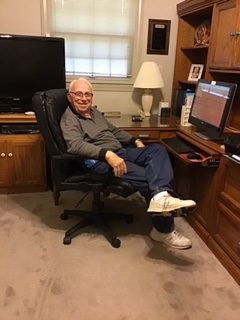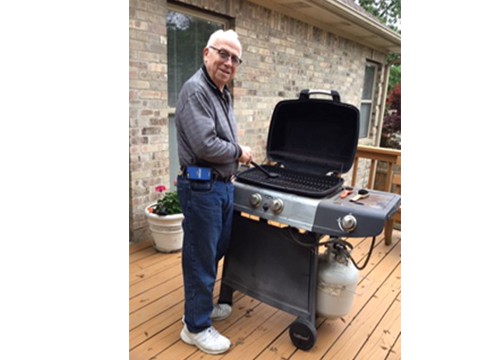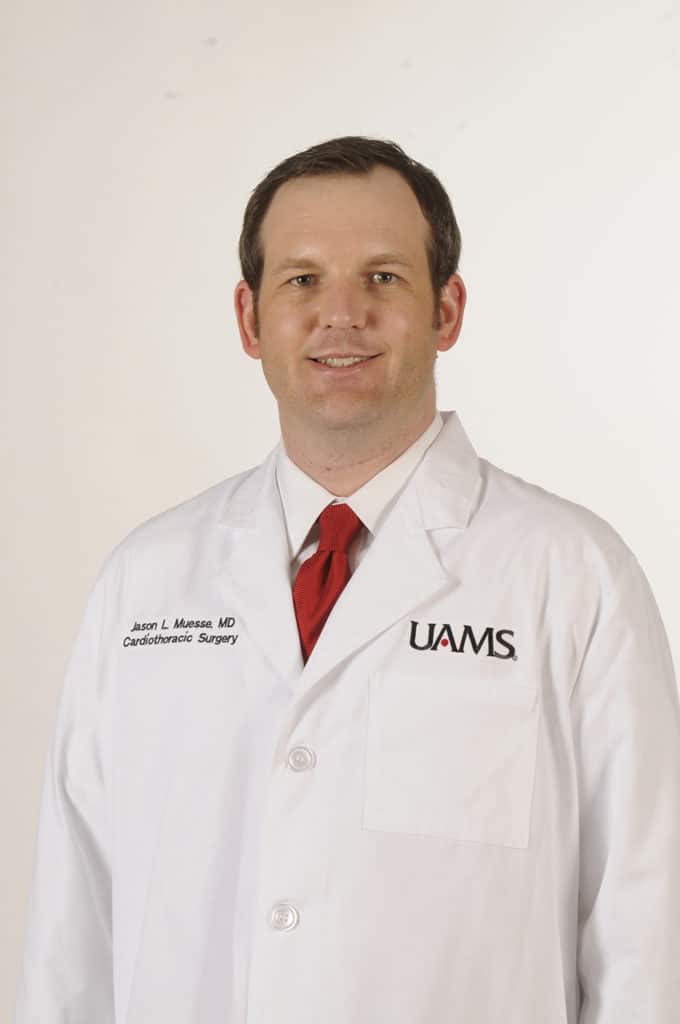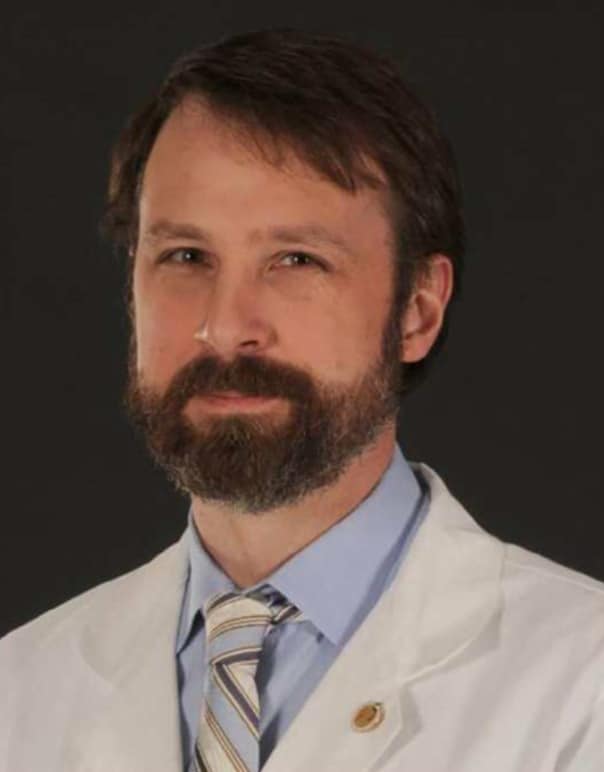Esophageal Cancer Patient Credits UAMS for Exceptional Outcome
| For most of his life, Kent Giboney was the picture of good health.
“I was fortunate that I never had any major illnesses,” said Giboney, a retiree who enjoyed two successful careers — one in real estate appraisal and the other in property tax administration.
The only chronic condition he experienced was difficulty swallowing, which was twice remedied by having his esophagus dilated. In this outpatient procedure, narrow sections of the esophagus are stretched to allow for easier swallowing. The esophagus is the tube that carries food from the mouth to the stomach.
“I didn’t really think that much about it,” he said, adding that narrowing of the esophagus, known as stricture, can result from scar tissue caused by reflux.
Giboney also was diligent about preventive health care, especially following the death of his older brother from colon cancer. Colonoscopies were part of his regular routine, but when he went for the procedure in 2018, he made an additional request.
“I was continuing to have difficulty swallowing, so I asked my doctor if he would also perform an upper endoscopy to see if he spotted any problems,” Giboney said.
Upper endoscopies use a thin scope to examine the esophagus, stomach and beginning of the small intestine.

Kent Giboney said he was completely confident in undergoing a complex surgery for esophageal cancer at UAMS.
During the procedure, the doctor removed a tissue sample from Giboney’s esophagus, which was biopsied and soon determined to be cancerous.
“Had I not asked for that endoscopy, I wouldn’t have known about the cancer. That request probably saved my life,” said the great-grandfather of six.
Soon afterward, Giboney, then 77, began concurrent chemotherapy and radiation therapy in his hometown of Searcy. The five chemo treatments and 23 radiation treatments resulted in very few side effects.
“I had a little fatigue toward the end, but other than that, you’d have never even known I went through it,” he said.
Giboney knew, however, that these were only the first steps toward his recovery; surgery was required to completely rid him of the cancer, and it wasn’t without risk.
About 25% of esophageal cancer patients experience complications following surgery, some of which, including pneumonia, can be severe.
The surgery he would undergo, called Ivor Lewis esophagectomy, is a complex operation that lasts six to seven hours. During the surgery, the cancerous portion of the esophagus is removed and the stomach is made into a tube. The stomach is then pulled into the chest and connected to the remainder of the esophagus, reducing its capacity by 30% to 40%.
As a result, the stomach no longer pumps food through the digestive tract, and patients must eat multiple, smaller meals each day. They also have to sleep sitting upright to prevent food from “coming back up” due to the lack of a valve in the esophagus keeping the food in place.
Knowing the seriousness of what he was about to undergo, Giboney sought the advice of friends and physicians. He was pleased when they universally recommended UAMS thoracic surgeon Matthew Steliga, M.D.
Steliga is an associate professor in the UAMS College of Medicine Department of Surgery and specializes in surgeries of the chest, including the lungs, esophagus and chest wall.
Having joined UAMS nine years earlier, Steliga quickly established himself as Arkansas’ leading thoracic surgeon. What Giboney didn’t know was that Steliga had a new surgical partner with equally impressive credentials: Jason Muesse, M.D.
Not one to take such a serious decision lightly, Giboney continued his research and found that as a fellowship-trained thoracic surgeon, Muesse also was highly qualified to perform this type of surgery.
“At my consultation with Dr. Muesse, I very candidly asked how many of these surgeries he performed in the past year since he arrived at UAMS. I expected him to say three or four. When he said he had done 16, it was enormously reassuring,” he said.
Muesse is an assistant professor in the UAMS College of Medicine Department of Surgery and see patients, along with Steliga and their fellow thoracic surgeon, Katy Marino, M.D., in the Surgical Oncology Clinic at the UAMS Winthrop P. Rockefeller Cancer Institute.
UAMS performs more esophageal cancer surgeries than any other hospital in Arkansas, averaging about 30 per year. Because the disease’s symptoms may not seem severe, it is often found in a late stage after it has spread to lymph nodes or other organs. Symptoms of esophageal cancer include difficulty swallowing, chronic acid reflux, unexplained weight loss and anemia.
According to the American Cancer Society, about 18,440 new cases of esophageal cancer will be diagnosed in the United States 2020, and 16,170 people will die as a result of the disease.
“I met with Mr. Giboney, his wife, Carol, and their family members. He asked a lot of excellent questions, including whether or not he should get a second opinion,” Muesse said.
Since it was necessary to wait about six weeks after he completed chemo and radiation to undergo surgery, Muesse told him he had plenty of time to consult with another specialist if he wanted.
“I gave him the names of some hospitals I would recommend, and he chose to go to a large, out of-state cancer center for a second opinion,” Muesse said.
After traveling seven hours and undergoing two days of testing at the center, Giboney’s confidence in UAMS was confirmed.
“One of the senior thoracic surgeons at the center called to tell me that he completely approved of the treatment I had already undergone and that I could feel confident in having surgery at UAMS. We returned with a high level of confidence that we were in good hands with Dr. Muesse,” Giboney said.
Surgery was scheduled for Dec. 11, 2018, with Steliga assisting Muesse in the operating room. Following the operation, Giboney recuperated in the UAMS hospital for 12 days. While it was a challenging adjustment, the support and encouragement of his nurses played a vital role in his recovery.
“The nurses were just outstanding. I get emotional thinking about them. By the time I was discharged, I felt like we were more than patient and nurse; we were friends,” he said.
Giboney’s recovery continued at home under the watchful eye of his wife of then 56 years. After about six months, his energy returned and he was back to his normal routine.
Eighteen months post-surgery, Giboney couldn’t be more grateful for the outcome of his cancer journey.
“My energy level, strength and stamina are as good or better than a typical 79-year-old man who has not gone through such a complex surgery. I am delighted and so profoundly grateful to be where I am today. I beat the odds, and I owe that in large part to the excellent insight and surgical skills of Dr. Muesse and Dr. Steliga,” he said.


